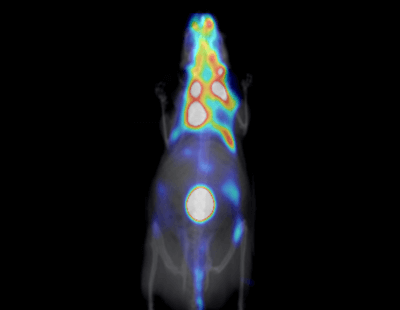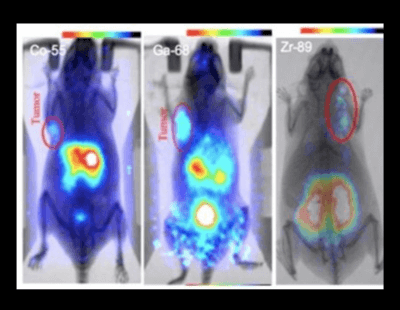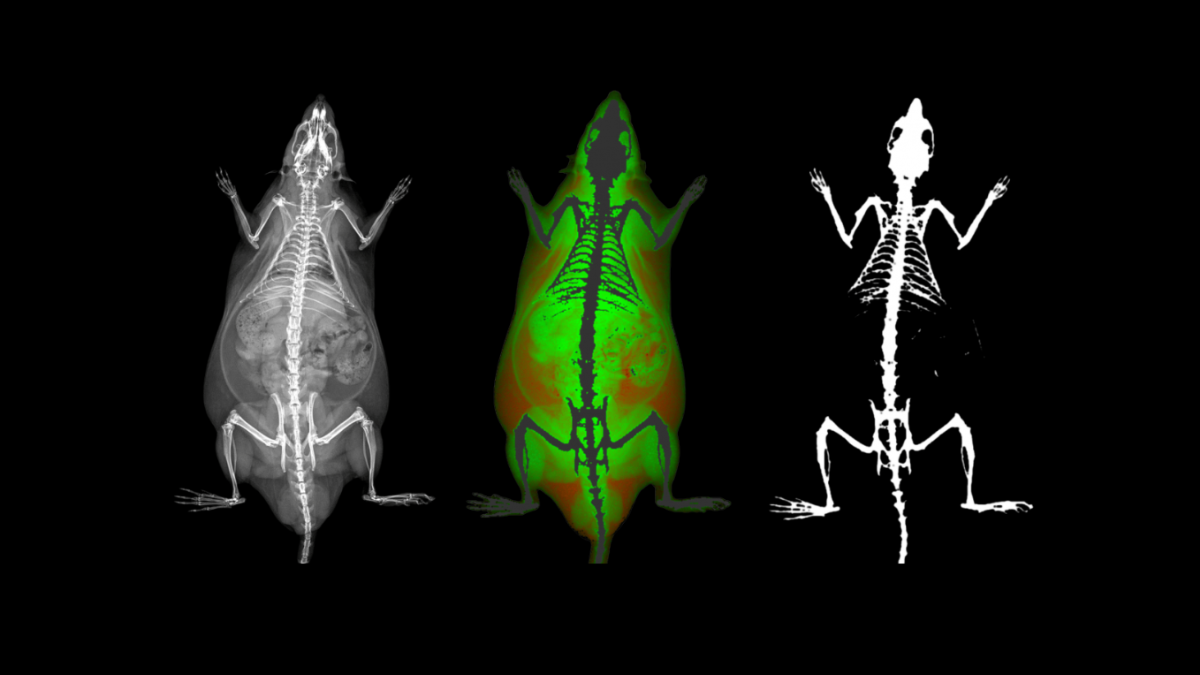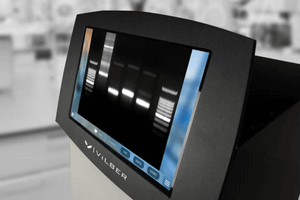β-eyeTM
A high resolution, benchtop, in vivo imaging system for real time PET isotope screening
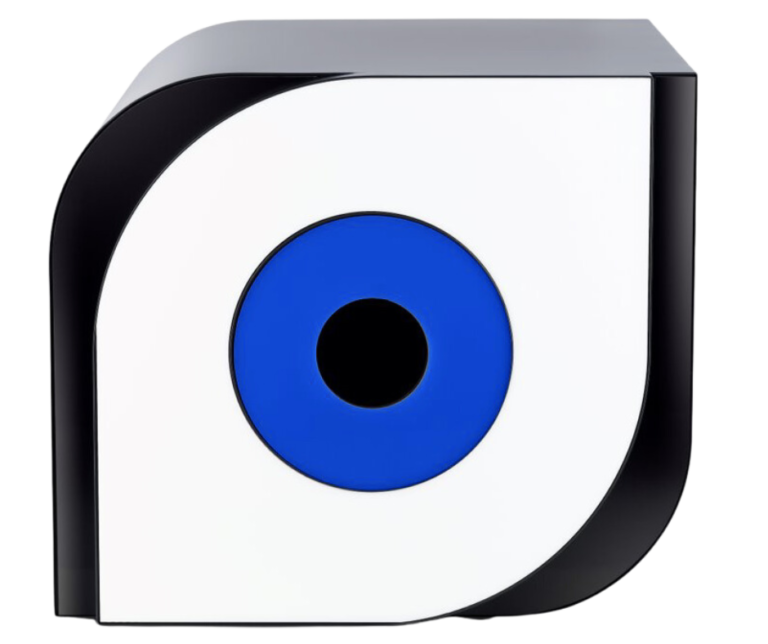
System Overview
The β-eye is the first and only PET scanner for real-time, in vivo screening of all positron emission tomography (PET) isotopes. With its high end detector technology, small footprint, and field of view suitable for whole body mouse imaging, the β-eye is a complete solution for all laboratories at any research stage.
The system is just 44cm x 46cm x 40cm in size, weighing less than 40kg. This makes it truly a desktop solution which can turn any space into an imaging lab. Despite its small footprint, the β-eye’s has a sensitivity that reaches 5%, spatial resolution near 1.2mm, and has time of flight (TOF) capabilities.
The animal handling system ensures the health and wellbeing of the imaging subject, while the Visual|eyes software suite provides a fully integrated, easy to use, platform for both image acquisition and data analysis.
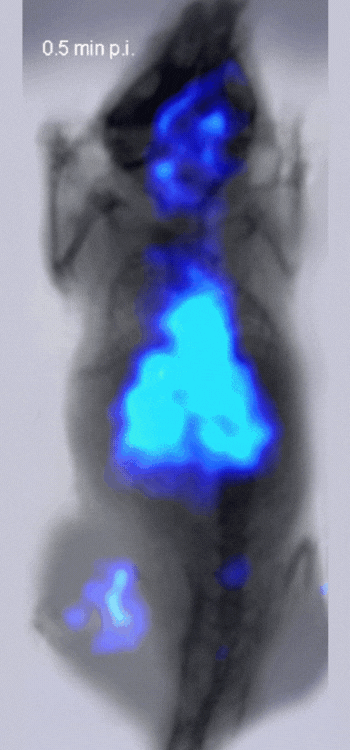
Features & Benefits
Realtime imaging from time zero post injection
Immediate feedback to the user if the injection was successful and the radioisotope can be imaged within the imaging subject.
Frame rates down to 10 seconds
Combined with the features above, including real time, whole body, mouse imaging – these acquisition times would allow the kinetics and dynamic distribution of the imaging compound to be followed over time.
Small footprint (44cm x 46cm x 40cm), and weight less than 40kg
With its small size, and weight, the system is truly a benchtop system.
Easy to use analysis software and export capabilities including DICOM filed
Users can quickly and easily generate quantitative data on user defined ROIs within the analysis software. Or users can export the data and perform analysis in third party software.
Animal handling system with integrated anesthesia delivery, heated bed, and option to monitor vital signs
The user has the ability to monitor and maintain a stable physiological state of the imaging subject throughout the session. This allows consistency in data, as well as being important for the health and wellbeing of the animal.
Active field of view of 50mm x 100mm
This field of view is suitable for whole body mouse imaging, allowing for continuous and dynamic imaging in a single acquisition. This is necessary when examining the kinetics and temporal and spatial distribution of the imaging compound.
State-of-the-art technical characteristics:
- Sensitivity that reaches 5%,
- Spatial resolution near 1.2mm
- Time of flight (TOF) capabilities
- Energy resolution of 11.8% at 511keV
- Dynamic range from 0.1 – 10 MBq
Provides high resolution, and high sensitivity images across the whole field of view, over a broad range of signal intensities.
Simple connections:
- Electrical requirements – 100-240 VAC
- PC connectivity – USB 2.0 Type A and Gb Ethernet
Allow the system to be positioned within any laboratory, animal facility, or clean room space – converting it into an imaging lab.
Anatomical mapping using artificially generated X-ray images.
The system does not product radiation, as it does not have an X-ray source; but anatomical information is still provided by the generated X-ray image.
Common imaging bed for all eye systems
Having a common imaging bed allows an animal to move from one eye system to another without moving. Images can be co-registered, allowing for multimodal imaging.
Models & Specifications
- Performance
- Sensitivity near 5% at center of field of view (CFOV)
- Spatial resolution of 1.2mm at CFOV
- Energy resolution 11.8% at 511keV
- Time-of-Flight (TOF) performance for improved signal to noise ratio (SNR)
- Dynamic range from 0.1 – 10 MBq
- Time frames down to10 seconds
- Time resolution of 350ps FWHF / TOF
- Animal Handling
- Integrated anesthesia
- Heated animal stage
- Vital sign monitoring
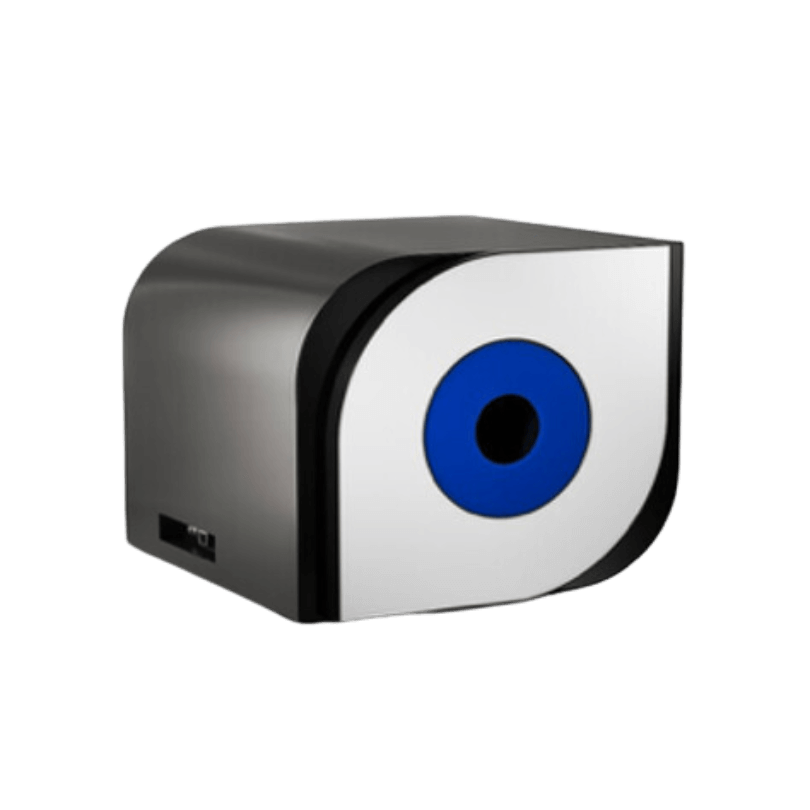
- Tech Specs
- Photodetectors – silicon photomultipliers
- Scintillators – LYSO:Ce
- Read-out channels = 256
- Active field of view = 50mm x 100mm
- Anatomical mapping – artificial X-ray
β-eyeTM Imaging Gallery
Applications
Cancer Research
PET can be used in cancer research applications in many ways: Confirm the presence of tumors Monitor the growth/size of tumors Detect metastasis Detect the expression of specific biomarkers
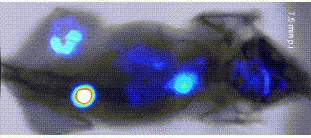
Theranostics
Many PET compounds are being made which are considered to be both therapeutic and diagnostic at the same time.
Biomarker Detection
Targeted probes can be used to image specific biomarkers, for example: Inflammation Angiogenesis Hypoxia Etc.
Pharmacokinetics/Dynamics/Biodistribution
Labelled compounds can be used to detect the pharmacokinetics, pharmacodynamics, and biodistribution of the compound over time after administration to the imaging subject.
Articles & Posts
The Role of X-ray Absorptiometry in Preclinical Research
Preclinical research is being revolutionized by advanced imaging technologies. As a critical phase
University of Greenwich – Biological Imaging at Medway with Scintica
Add Your Heading Text Here Symposium on Biological Imaging at Medway with Scintica
Gel Documentation Systems: Bridging the Gap in Modern Lab Research
A gel documentation system (GDS) captures images of nucleic acids and proteins in
